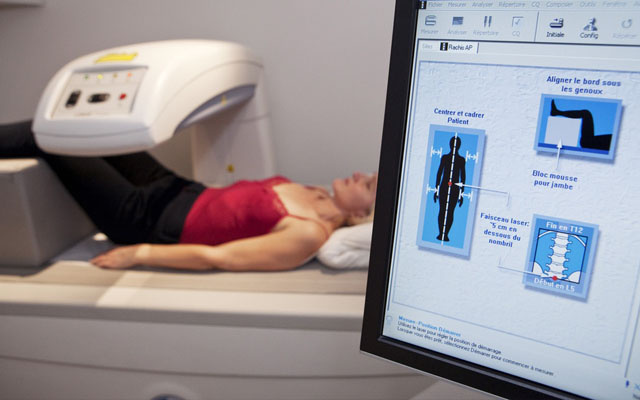Bone mass loss in menopause: how to slow it down.
Menopause significantly accelerates bone loss and increases the risk of osteoporosis.
One in two postmenopausal women suffer from osteoporosis and most will suffer a fracture in their lifetime.
Fractures cause pain, reduced mobility and functionality and are associated with reduced quality of life and increased mortality.
Research shows that up to 20% of bone loss can occur from the onset of menopause onwards.
But it is never too late for a woman to receive treatment for osteoporosis.
The goal of treatment should be to reduce fractures associated with osteoporosis and maintain good bone health.
Osteoporosis is a progressive condition in which bones become structurally weak and are more likely to crack or break. As hormones change to adapt to the physiological changes of menopause, estrogen levels begin to fluctuate and then drop.
Since estrogens help prevent bone weakness by slowing down the natural breakdown of bone, their decrease during menopause significantly accelerates bone loss.
Estradiol is one of the three estrogen hormones produced naturally in the body. The effects of estradiol are clearly seen in women experiencing menopause. During this process, women naturally have lower levels of estradiol, as the ovaries no longer produce it, causing menstrual cycles to stop. This change often causes mood swings, vaginal dryness, hot flashes and night sweats - symptoms commonly associated with menopause. Over time, lower estradiol levels can lead to osteoporosis.
Vitamin D and calcium are other vitamins that play a role in bone health. Vitamin D allows your body to absorb calcium. Calcium is essential for building strong, healthy bones. Without enough vitamin D and calcium, bones may not form properly in childhood and may lose mass, become weak and break easily in adulthood. Even if you get enough calcium in your diet, your body will not absorb that calcium if you don't get enough vitamin D.
There are many medications and hormonal therapies available to prevent further bone loss and to stimulate new bone formation.
Lifestyle changes that can improve bone health include:
Exercise:
An individualized exercise program supports proper skeletal maintenance,
a personalized exercise program is essential for maintaining healthy bone health, including resistance exercises,
balance and weight training.
Balanced nutrition:
Eat foods rich in vitamin D and calcium.
Get outdoors:
Exposure to the sun boosts vitamin D production.
Weight management:
Preventing obesity helps maintain strong bones.
Smoking and alcohol:
Avoiding smoking and limiting alcohol consumption can reduce the risk of
loss of bone mass.


